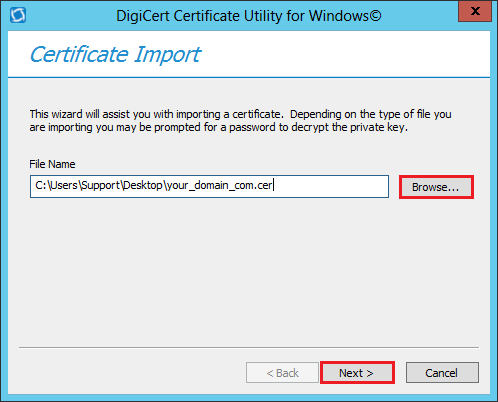

LDAPsearch ~]# ldapsearch -x -LLL -h 10.1.1.110 -D cisco -w cisco -b “cn=computers,dc=lab,dc=local” -s sub “(cn=WORKSTATION1)” | moreĭiscovering LDAP Information for User “Cisco” The screenshots below show the information that each of the tools displays. In this scenario, we are looking for details on the computer named Workstation1. Navigate through the tree and view the appropriate entriesĭiscovering LDAP Information for Computer “Workstation1” Select the options based on the base domain and object class to viewħ. Click “Bind…” and add the credentials and domain to bind to based on the “Connect…” entryĦ. Click “Connect…” and define the domain controller to connect to.Ĥ. See the references for more details on the correct version to useģ. Different versions need to be downloaded based on the Microsoft OS that is used.
#LDAP QUERY TOOL MICROSOFT DOWNLOAD#
Download LDP using the Microsoft support tools. Complete the following steps to use it.ġ. It is similar to the other Microsoft tool, called ADSI Edit. LDP is a tool that is included with the Microsoft Support Tools. Fill in the parameters pertaining to the domain controllers. Click “Start > Run…” and enter “adsiedit.msc”Ĥ.

See the references for more details on the correct version to useĢ. Download ADSI Edit using the Microsoft support tools. It is similar to the other Microsoft tool, called LDP. ObjectCategory: CN=Computer,CN=Schema,CN=Configuration,DC=lab,DC=localĪDSI Edit is a tool that is included with the Microsoft Support Tools. OperatingSystemServicePack: Service Pack 2 ObjectSid:: AQUAAAAAAAUVAAAAAdvbrYC+UGR9bSVqWwQAAA= ObjectCategory: CN=Container,CN=Schema,CN=Configuration,DC=lab,DC=localĭn: CN=WORKSTATION1,CN=Computers,DC=lab,DC=localĭistinguishedName: CN=WORKSTATION1,CN=Computers,DC=lab,DC=local More information about the syntax can be found by typing “man ldapsearch” ~]# ldapsearch -x -LLL -h 10.1.1.110 -D cisco -w cisco -b “cn=computers,dc=lab,dc=local” -s sub “(cn=*)” | moreĭescription: Default container for upgraded computer accountsĭistinguishedName: CN=Computers,DC=lab,DC=local Enter an ldapsearch command to search for entries. SSH into the Linux server that has ldapsearch installed.Ģ. Many security appliances are using Linux on the backend and ldapsearch is normally one of the common utilities that is included. LDAPsearch is the OpenLDAP tool that is used to search LDAP. Now the LDAP tree structure should be shown. Leave the next parameters at the defaultħ. This can be just a normal user without any admin rights.Ħ. This is designated as “dc=lab,dc=local”.ĥ. In the example below the domain is lab.local. The host is the IP address of the domain controller. Choose a name for the profile and click nextĤ. Use the following steps to get started.ģ. This is nice graphical view of the LDAP tree. The computer “WORKSTATION1” will be used as an example. The user “cisco” will be used as an example.

The Active Directory structure that is used in the examples is shown below. I would like to present the tools I’ve used and then provide an example of the output that the different tools provide when searching on a particular computer and user. I have dealt with a number of different tools to gather the information. It is important to be able to test existing LDAP functionality in order to successfully use the data within the network security appliances.

Cisco ASA Dynamic Access Protocol(DAP) uses LDAP to determine the access a user should have.Cisco NAC Appliance uses LDAP queries to determine the role a user should be added to based on the LDAP group they belong to.Ironport Web Appliance uses LDAP queries to determine if an identity rule allows the end user to access a website.Here are some common ways that LDAP is used in network security appliances. Network security tools can use this valuable information to more granularly define end user privileges and monitoring. In that context, LDAP provides valuable information about users and computers within the domain. It is most often seen in Microsoft Active Directory. LDAP is an open standard application protocol that provides a directory structure for housing information.


 0 kommentar(er)
0 kommentar(er)
